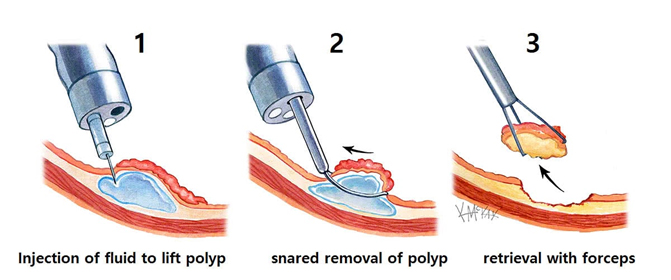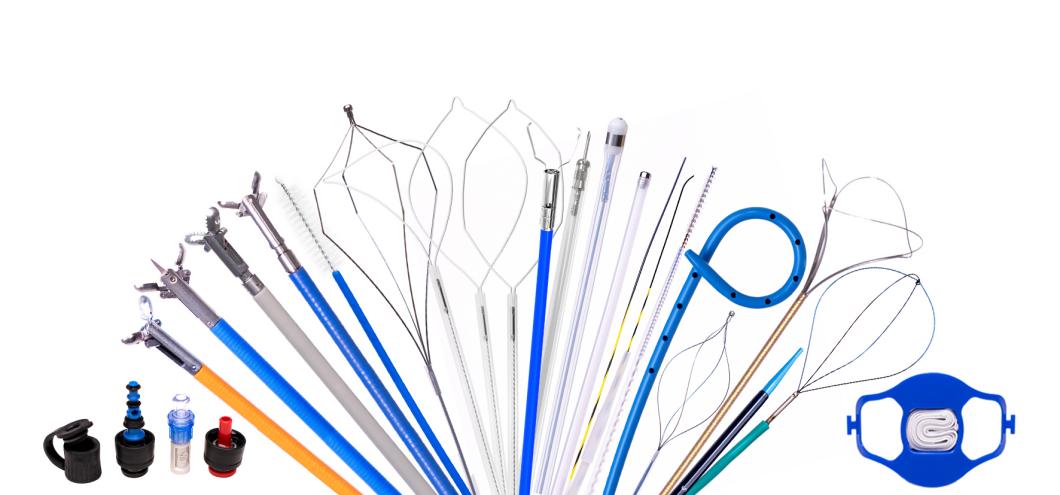Olympus launches disposable hemoclip in the US, but they are actually made in China
2025 - Olympus announces the launch of a new hemostatic clip, Retentia™ HemoClip, to help meet the needs of gastrointestinal endoscopists. Retentia™ HemoClip offers 360° rotation and intuitive one-step deployment, with three different sizes of clamping control to accommodate a variety of clinical hemostasis applications. It will be launched in the United States with plans to further expand globally.
Interestingly, Olympus’ official news introduced the advantages of this hemostatic clip, with a note that the hemostatic clip information came from: Chinese manufacturer database .
Let's first look at the advantages of this hemostatic clip:
1. The clamp arm length is available in three specifications: 9 mm, 12 mm and 16 mm, suitable for various clinical clamping applications;
2. Short tail length helps to visualize the target point and is more convenient for placing multiple clips compared to long tail length
3. The sheath markings on the insertion tube are designed to help identify insertion and removal
4. Intuitive handle design allows the clip to be unfolded in one step
Hemostasis within the gastrointestinal tract is a technically demanding procedure, and the use of hemostatic clips and associated equipment may result in patient injury, including but not limited to inflammatory response, infection, hemorrhage, and perforation.
The Retentia™ HemoClip is part of Olympus’ comprehensive endoscopic therapeutics portfolio, providing physicians with advanced solutions for procedures such as endoscopic mucosal resection (EMR) and endoscopic submucosal dissection (ESD).


EMR and ESD are technologies that remove cancerous or other abnormal tissue from the digestive tract. Olympus' endoscopy portfolio includes devices such as electrosurgical knives and hemostats that provide targeted monopolar coagulation. The portfolio also includes technologies that help detect and control gastrointestinal bleeding in combination with traditional technologies such as clips.
The Retentia™ HemoClip reflects Olympus’ continued focus on addressing the challenges of bleeding during endoscopic procedures. Olympus’ Red Dual-Color Imaging (RDI™) technology , a feature of the EVIS X1™ endoscope system introduced in 2023, helps improve the visibility of intramucosal bleeding sites and enhances the visibility of deep vessels compared to white light.
The RDI™ technology is not intended to replace histopathology sampling as a diagnostic tool. In addition, EndoClot® Polysaccharide Hemostatic Spray (PHS), launched in 2022, is a powdered hemostatic agent intended for use in conjunction with other conventional techniques, such as clips, to control bleeding.
Olympus's gastrointestinal diagnosis and treatment hemostasis solutions actually include a wide variety of treatment devices, including disposable hemostatic clips.
Among Oba's solutions for gastrointestinal diseases, its endoscopes are now the first choice of most doctors, because their endoscopes are far better than those of domestic manufacturers in terms of image quality, operability, safety and standardization of reprocessing, repair and maintenance, and reliability of the endoscope itself (this is not to boost others' morale and destroy our own prestige, this is the feedback from the vast majority of clinical doctors).
Of course, some people may say that this is mainly due to the good education and training of Oba, which effectively binds the usage habits of Chinese endoscopy doctors with its products. This is indeed one of the reasons, but the more important one is that Oba endoscopes are far ahead in product technology and quality.
However, Oba's endoscopic consumables, such as biopsy forceps, snares, hemostatic clips, injection needles, and electrosurgical units, do not have a good competitive advantage in the Chinese market.
On the one hand, the domestic endoscope consumables have started to be purchased in a centralized manner. On the other hand, the technical difficulty of consumables is less than that of endoscopes. A large number of domestic manufacturers have emerged, such as Nanwei Medical, Anjies, Shanghai Wilson, a subsidiary of Kaili Medical, and Hangzhou Jingrui, a subsidiary of Aohua Endoscopy. At the same time, foreign consumables manufacturers such as Boston Scientific and Cook Medical continue to exert their strength.
In terms of cost, manufacturing, processing and other supply chains, microscopic consumables in China are superior to those of OBA.
Take biopsy forceps as an example. The purchase price of biopsy forceps with plastic inserts in domestic hospitals ranges from 60 to 100 yuan, but Oba's purchase price can reach 100 to 200 yuan, or even higher. The cost of domestic mass production can be controlled within 10 yuan.
Moreover, as long as the size specifications of most consumables meet the requirements, the insertion outer diameter is smaller than the instrument port, and the performance is normal, it can be adapted to endoscopes from any manufacturer. Unlike endoscopes, it can not only be used with its own processor and light source.
Therefore, many hospitals are currently more willing to purchase domestic microscopic consumables. On the one hand, it can meet clinical use requirements, and on the other hand, it can save costs. Why not do it?
Therefore, we can also see that in recent years, the revenue and net profit of companies like Nanwei Medical and Anjies have continued to grow. (Excluding the impact of the epidemic)
it is not surprising that Obama’s new hemostatic clip is produced by a Chinese manufacturer .

In fact, there are already cases of cooperation between OBA and Chinese endoscopy companies:
In 2021, Olympus cooperated with Veran Medical Technologies (Veran Medical Technologies is a wholly-owned subsidiary of Olympus) and Huaxin Medical to launch the first H-SteriScope disposable bronchoscope, expanding its bronchoscope product portfolio in the United States. In September 2023, Olympus announced that its second disposable endoscope, Vathin E-StereScope, has been approved by the FDA for sale in the United States . This endoscope is suitable for the diagnosis and treatment of otolaryngology surgery. This disposable rhinolaryngoscope E-StereScope is manufactured by the domestic company Huaxin Medical (Vathin) and is exclusively distributed by Olympus. The cooperation between Oba disposable endoscopes and China Huaxin Medical is mainly due to Huaxin Medical's processing capabilities for key components of disposable mirror bodies (riveted snake bones, insertion tubes, etc. for disposable endoscopes) with low cost, reliable technology, and its ability to manufacture in large quantities and quickly. If the same product is processed and manufactured in Japan or the United States, the cost of disposable endoscopes will remain high, so even if it is launched on the market, there is no absolute cost and price advantage. Why didn't the disposable hemostatic clip cooperate with Nanwei Medical, the leading domestic endoscopic consumables manufacturer? In fact, it is very simple. Nanwei Medical's technology and product strength have already formed a direct competitive relationship with Oba. Oba would rather choose a manufacturer with the ability to process and manufacture endoscopic consumables to cooperate, so there is no need to worry too much about its commercial competition. Of course, this also shows that Yangzhou Fateli Medical Equipment Co., Ltd. has the technology and product development capabilities of endoscopic consumables. Of course, although there is no announcement to explain the cooperation model between Oba and Fateli, it is certain that it is mutually beneficial and win-win. From the cooperation between Huaxin Medical, Fateli Medical and Oba, the growth of Chinese endoscopy companies is huge, and domestic endoscopy companies have many advantages that Oba does not have in other regions. China not only has a huge endoscopy market, but also has rapid progress in R&D, processing and manufacturing capabilities. It also reflects that disposable endoscopes and endoscopic consumables called reusable endoscopes are also ahead in localization. However, this is understandable. After all, the technical difficulty and disinfection difficulty of reusable endoscopes are far greater than disposable endoscopes and endoscopic consumables. Overall, it is encouraging that the localization process of endoscopes has made great progress. We hope that the equipment will become more scientific, humanized, and intelligent, benefiting doctors and patients.
About Zhuoruihua Medical
Jiangxi Zhuoruihua Medical Instrument Co., Ltd. specializes in the development and manufacturing of high-quality endoscopic consumables and accessories, providing innovative, dependable solutions for healthcare professionals worldwide.
Our hemostatic clips have obtained FDA 510k certification. Currently, our largest opening size is 20mm, and we also have 10, 12, 15 and 17mm clamp heads to meet customers' needs for various sizes.
For more information about our products and services, please visit:
We, Jiangxi Zhuoruihua Medical Instrument Co.,Ltd., is a manufacturer in China specializing in the endoscopic consumables, such as biopsy forceps, hemoclip, polyp snare, sclerotherapy needle, spray catheter, cytology brushes, guidewire, stone retrieval basket, nasal biliary drainage catheter,ureteral access sheath and ureteral access sheath with suction etc. which are widely used in EMR, ESD, ERCP. Our products are CE certified, and our plants are ISO certified. Our goods have been exported to Europe, North America, Middle East and part of Asia, and widely obtains the customer of the recognition and praise!

Post time: Apr-22-2025



